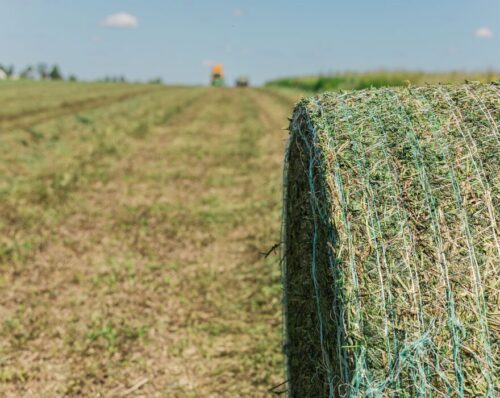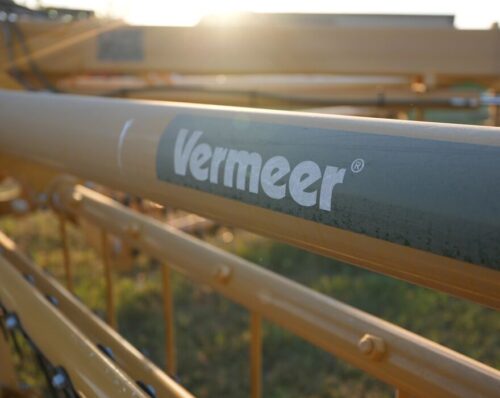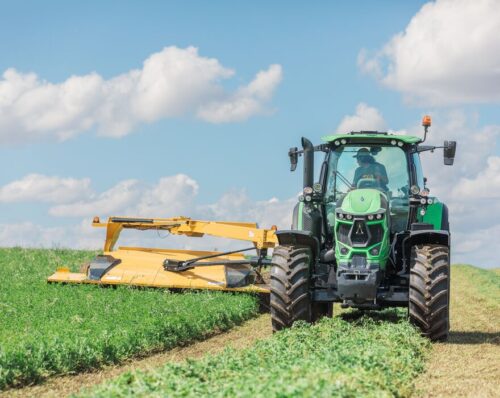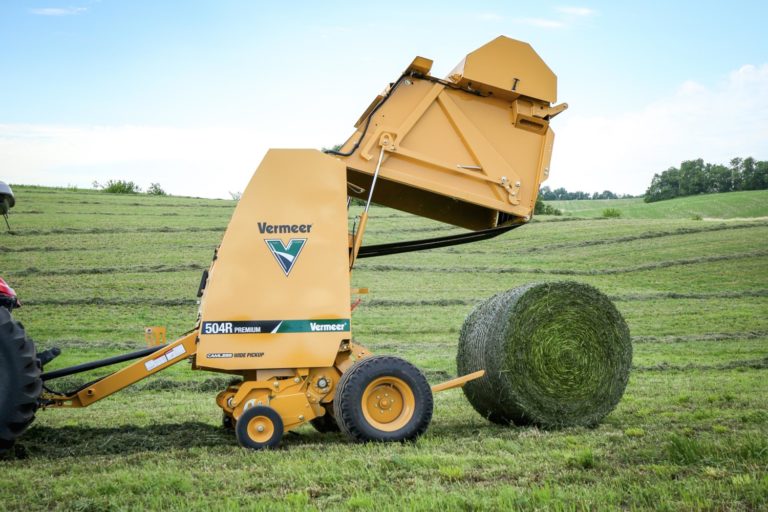
Baleage Q&A: Will It Work For Me?
June 2018
Whether you call it haylage, baleage or baled silage, there’s a lot about high-moisture baled hay that makes it a nutritious livestock feed if produced and handled properly.
Here are a few common questions and answers on baleage, ranging from its feed value to its management and how producers can economically produce the high-value feedstock.
Do cattle like baleage better than dry hay?
With baleage, fermentation begins after it’s made into a bale and wrapped in plastic. This prevents outside oxygen and moisture from penetrating the bales to make it a more palatable feed source for cattle. A combination of better leaf retention and the fermentation that’s similar to that which takes place in ruminant animals’ digestive system makes baleage more appealing to cattle and less prone to causing bloat than dry hay, according to North Carolina Cooperative Extension livestock specialist John Cothren. Properly wrapping baled silage effectively, males baleage “pre-ruminated” and makes for easier digestion and increased palatability, Cothren added.
“Conserving forage as baleage retains more nutritive value and makes the forage more palatable compared to conventional dry hay production and storage,” added University of Tennessee at Martin agricultural economist and Louisiana State University AgCenter contributor Ross Pruitt.
Are there nutritional advantages to baleage? What are they?
The way baleage is produced and processed does more than just makes for a more palatable feedstock. It also yields a higher-protein feed source with increased nutritional value. And, if processed correctly and under the right conditions, baleage helps producers get more tonnage from their forage source when compared to cutting and baling dry hay.
“Baleage production results in a forage source that has increased protein and total digestible nutrients (TDN) when compared to dry hay,” Iowa State University Extension beef cow-calf specialist Patrick Gunn said in a university report. “In addition to increased forage quality, baleage typically results in dry matter storage losses of only five to 10 percent compared with as much as 30 percent in hay that is stored outside with no cover. Due to deterioration and weather exposure, large round bales stored outside may have as much as 25 percent or more of the bale wasted at the feeder, whereas baleage likely results in 10 percent or less waste.”
The quality and moisture of the forage at cutting, as well as how it is handled after cutting, will go a long way to determining whether your baleage will meet the nutritional needs of the livestock to which you’re feeding it.
“It is important to consider if making baleage can reduce the need for supplemental feeds by harvesting and storing high-quality forage,” according to Auburn University Beef Cattle Systems Extension Specialist Kim Mullenix. “The stage of plant maturity at harvest is the single largest factor affecting the feeding value of baleage. The process of putting up baleage can also impact feeding value. Bales that are wrapped with a minimum of six layers of plastic between a moisture range of 40-60 percent can decrease storage loss and produce a more stable product at the time of feeding.”
Does baleage affect bloat in cattle?
According to University of Wisconsin Forage Agronomist, Dr. Dan Undersander, ensiling and fermentation begin in baleage before it’s fed to a cow or other ruminant animal, less carbon dioxide and methane gas will be produced in the animal’s rumen and reticulum during digestion. Since the buildup of gases in these parts of a cow’s digestive system is a primary cause for bloat, feeding baleage helps with the issue.
“If anything, bloat is less of a problem with baleage,” said Undersander.
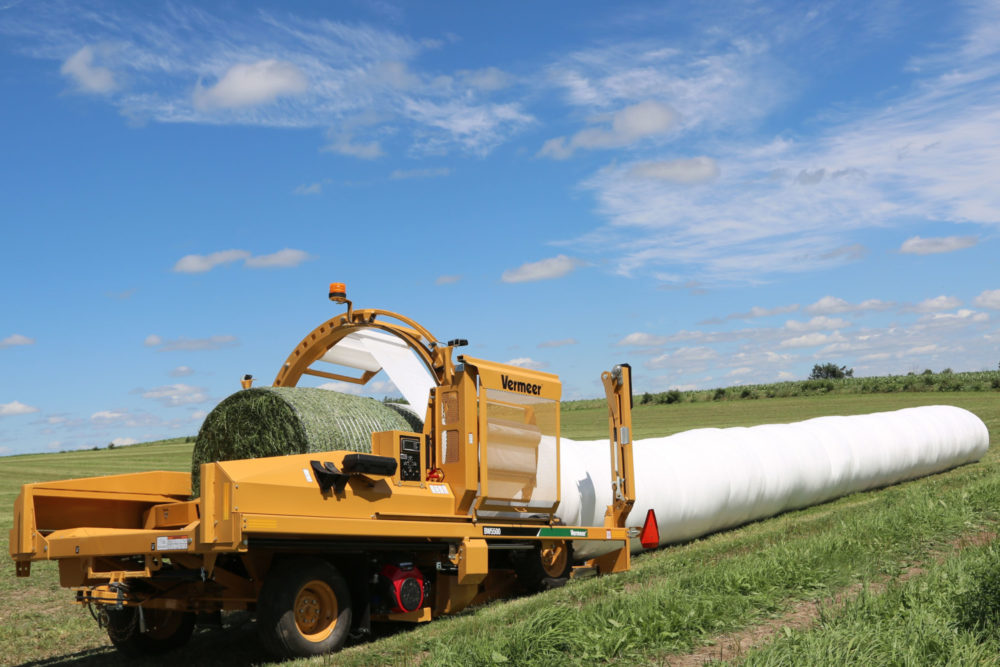
Does it cost more to put up baleage than dry hay?
While it yields a higher-value feed, producing and feeding baleage typically does carry a higher cost than dry hay. Machinery costs, operation size and the specific animals you’re feeding – lactating versus gestating cows, for example – all contribute to the cost of feeding baleage versus dry hay. Though the nutritional value is higher with baleage, the machinery you use to process it will dictate the cost-efficiency of the process for your specific herd, Pruitt said.
“Producers may need to focus on increasing the nutritional value of the baleage for the decision to purchase a bale wrapper and high-moisture baler to be economical. The high per-hour costs of operation may make it cost-prohibitive for smaller cattle operations to purchase, but use in a custom wrapping situation can bring down the hourly costs and help a bale wrapper and/or high-moisture baler pay for itself,” Pruitt said.
What equipment do I need to put up baleage?
Though some large round balers designed for dry hay will handle high-moisture baleage, it’s important to ensure your baler is one of those that can or else you’ll need to look to a machine specific to high-moisture forages and grasses. Once you find a baler that can handle high-moisture crops, you then have to determine if you want a baler with a pre-cutting system which can come with additional costs but also benefits. Windrowing for baleage is virtually identical to that of dry hay. The additional cost in producing baleage lies in the wrapping equipment you employ.
“There are two major ways to store forage as baleage: Through use of a single bale wrapper or an inline bale wrapper that continuously wraps bales. Significant differences exist between the two systems. Most notably, the single bale wrapper generally costs less and runs on the hydraulics of the tractor towing the wrapper, but it does not wrap bales as quickly, requires more labor and uses more plastic. In contrast, the inline bale wrapper costs more, runs on its own gasoline-powered engine, wraps bales substantially quicker and uses less plastic. Trailed versions of the single bale wrappers can be operated with a 45-50 horsepower tractor or more,” Pruitt said. “While the inline initially may be more expensive to purchase, it has advantages in needing less labor, wrapping more bales per hour and not using as much plastic per bale as a single bale wrapper.”
How does geography affect baleage production and feed value?
Warmer, wetter conditions influence the long-term quality and feed value of baleage. Producers should stay attentive to conditions during cutting, processing and wrapping baleage to avoid potential temperature- and moisture-related damage. Doing so helps make it a sustainable feed source for cattle producers in the South even if conditions could promote spoilage.
“Baling when the crop is too dry is the most common problem because a field may start out at the right moisture and end up being too dry. Dry forage doesn’t provide the bacteria enough moisture to allow sufficient fermentation,” Cothren said. “But, it does allow fungi to grow during storage and feeding that can lead to deterioration. Baling too wet is less common. However, high moisture silage spoils more quickly when exposed to air.”
Moisture and air are just two of the concerns when baling and wrapping baleage, which becomes relatively unstable when exposed to the elements. Heat can be a major quality culprit, too, with higher temperatures robbing bales of digestible protein if sustained for more than three weeks unwrapped, Undersander said. It’s another reason why it’s important to work quickly when baling and wrapping. While it comprises a considerable cost and management component, wrapping in plastic is a critical part of preserving the feed value of baleage.
“Wrapping bales as soon after baling as possible reduces the heating damage,” Undersander added. “Heating is a loss of total digestible nutrients and should be minimized.”
At what moisture content do I put up baleage?
As a high-moisture, high-nutrient feed alternative to dry hay, baleage is cut at around 75 percent moisture and baled around 40-60 percent moisture. Higher moisture levels allow fermentation, or ensiling to happen once baled.
“No forage preservation method can improve the quality of forage; some quality is always lost in the harvesting process. Therefore, when making baleage, harvest the forage at a slightly higher quality than desired for the animals being fed,” Undersander said. “From harvest to storage, if good harvesting practices are in place, expect a five to 10 percent decline in quality for haylage and 10 to 15 percent decline in quality for hay.”
It’s important to hit the “sweet spot” with hay moisture when baling it for baleage. Though excessive moisture can lead to spoilage when exposed to the air, hay that’s baled and wrapped too dry – anywhere around 25 percent moisture for baleage is in the “acceptable” range — can be an even bigger problem, Cothren added.
Can I shorten my harvest window by putting up baleage?
Ideally, baleage is ideally cut, windrowed, baled and wrapped in a fairly rapid succession in order to minimize the time the high-moisture hay lies in the field losing yield and quality. Producing baleage using today’s latest baling and wrapping tools can shorten that time window even further and expedite the process.
“By using baleage technology, less time is needed between cutting and baling and that decreases the risk of rain damage. As a result, declines in forage quality due to rain-induced delays in harvesting are reduced greatly,” Pruitt said. “Consequently, the conserved forage is of higher quality and also can produce higher yields due to more frequent cuttings.”
Is baleage better for feedlot or cow/calf operations?
Baleage is a suitable feedstock for both feeder cattle and cow-calf pairs, though benefits to the latter are typically more visible. As a feed source with higher nutrition and quality, feeding baleage can lead to higher weaning weights and reduced needs for nutritional supplements, Pruitt said.
“One of the primary advantages of baleage is the ability to harvest and store higher quality forage and/or harvest more often due to diminished weather concerns. Improved forage quality can result in heavier weaning weights for cow-calf producers or decreased need for supplementation to produce the same size calves,” he said. “In general, producers with cow-calf operations that have at least 150 cows in the herd will find the decision to purchase a bale wrapper and high-moisture baler to be cost-effective compared to employing conventional hay-making systems. In contrast, producers with cow-calf operations of less than 100 cows are less likely to find such a purchase to be economical, unless they use the machinery in a custom hire enterprise.”
This article contains third-party content, observations or advice that is not necessarily endorsed by Vermeer Corporation, its dealers or its affiliates.




